"Elves" flourish in high-altitude mountain realm
Source: InKunming | 2024-09-05 | Editor:Rachel
Colorful meconopsis, pure white anemone, and saussurea medusa blooming in the harshest conditions… On the Baima Snow Mountain, located in the middle section of the Hengduan Mountains, the rare alpine plants that bloom successively with rising altitude reveal the extraordinary resilience of life in this high-altitude mountain realm.

Anemone rupicola
With its pentagonal heart-shaped leaves and translucent white flowers with a hint of purple, the anemone rupicola sways in the wind among the gravel. Despite its only 30-40 cm height, it exudes a unique charm.
This perennial herbaceous plant, a member of the ranunculaceae family, is found in northwest Yunnan, western Sichuan, southeast and southern Xizang, as well as in Bhutan. It thrives in rocky cliffs, stony slopes, valleys, and forest undergrowth, preferring cool and moist environments with cold solid tolerance. The seeds of anemone rupicolas have medicinal uses, and the flowers are ornamental.
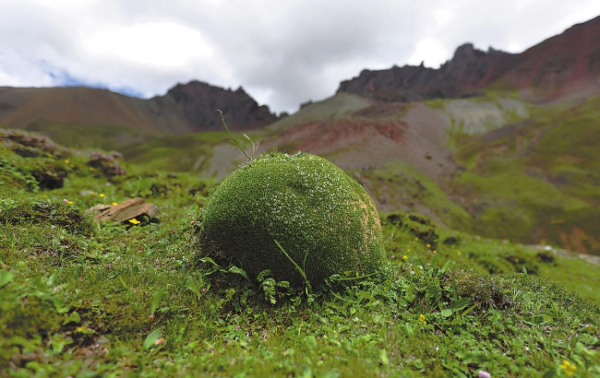
Arenaria densissima
On the alpine meadow at an altitude of 4,320 meters, numerous spherical "mounds" can be seen. These "mounds" are arenaria densissimas, which grows in clumps to retain a bit of heat in the harsh mountain environment, keeping warm together to withstand extreme cold.
Arenaria densissima, this perennial cushion-forming herb belongs to the Caryophyllaceae family and grows in alpine meadows and screes between 3,600 and 5,250 meters above the sea level. It has not yet been cultivated artificially.
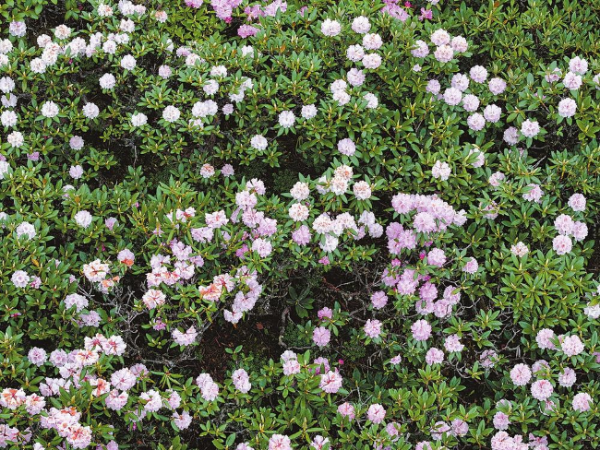
Rhododendron lapponicum
The altitude increases along the winding road of Baima Snow Mountain, and rhododendrons appear in groups amidst the high mountain forests. The Shangri-La region hosts numerous varieties of rhododendrons.
Alpine rhododendrons, belonging to the Ericaceae family, have dark green leaves and deep veins with diverse flower colors, and some varieties are able to endure temperatures as low as -28 to -25 degrees Celsius.
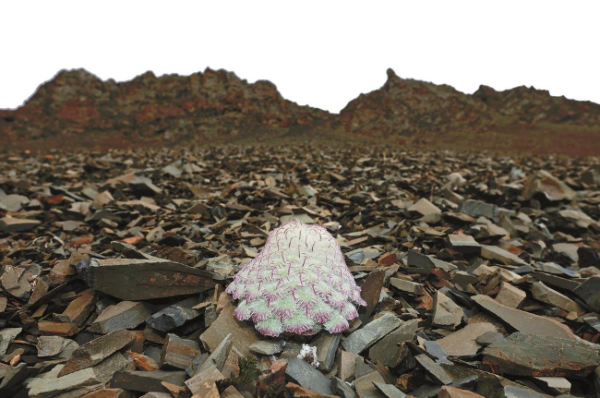
Saussurea medusa
4,500 meters above the sea level is considered a "life boundary zone" by biologists. The Baima Snow Mountain area, between 4,600 and 5,000 meters, features high-altitude screes with sparse vegetation and is where the Saussurea medusa grows.
The Saussurea medusa, named for its flower clusters resembling bunnies and its bracts resembling jellyfish, is a national second-class protected wild plant and belongs to the Dicotyledons Campanulaceae Asteraceae. Found in high-altitude stony slopes and alpine screes in Qinghai, Xizang, Gansu, and Yunnan, it blooms only once, and the seeds mature at the end of its life.
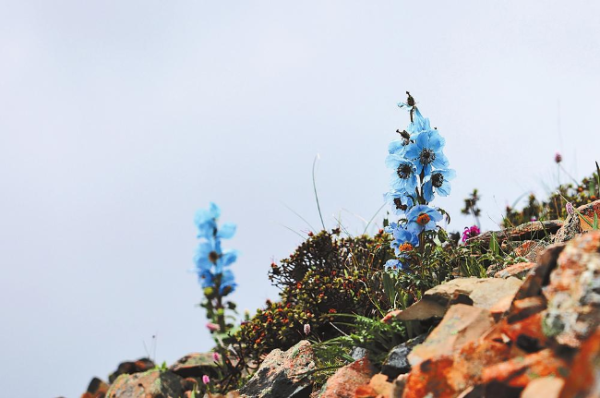
Meconopsis speciosa
At 4,410 meters, in a high-altitude meadow among rocky outcrops, the Meconopsis pseudointegrifolia Prain blooms profusely with bright yellow petals.
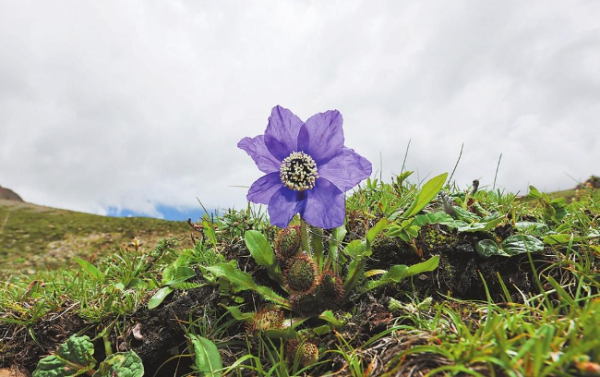
Meconopsis lancifolia
The Baima Snow Mountain area is rich in biodiversity and one of the distribution centers for the meconopsis. Here, various rare species of meconopsis can be observed. The meconopsis can bloom with the most captivating flowers even in the harshest of arid conditions, called the "Alpine Green Deity" or "Wilderness Beauty" by plant enthusiasts.
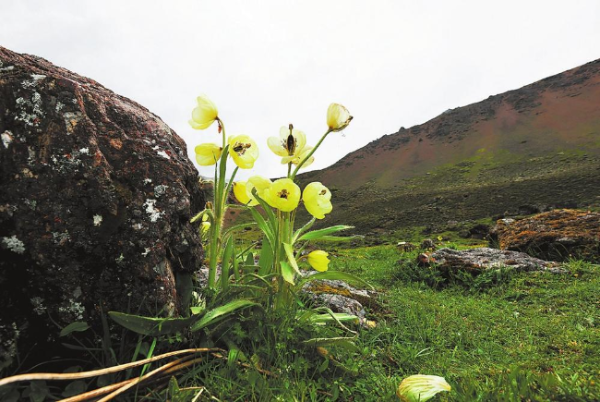
Meconopsis pseudointegrifolia Prain
Meconopsis, known scientifically as the genus Rhodiola in the Crassulaceae Family, encompasses both annual and perennial herbaceous species. It features large and beautiful flowers in blue, purple, red, yellow, and occasionally white. These plants are predominantly found in the snow-capped meadows, alpine shrubs, and scree at altitudes between 3,000 and 5,000 meters in northwest Yunnan. The meconopsis has an exceptionally long vegetative growth period; it may take several years to mature before it can flower, bear fruit, and disperse seeds, thus completing its life cycle.
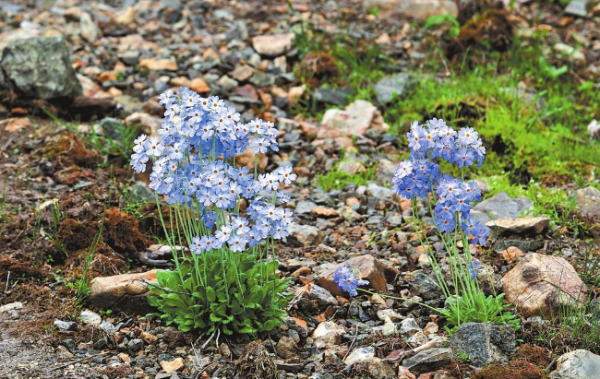
Primula laciniata var. Amoena
In the complex and diverse ecological environment of Pujin Langba, numerous rare alpine plants flourish on the northern side of Baima Snow Mountain. At 3,000 meters, the shrubbery and rich vegetation showcase a variety of vibrant primroses. Primroses, known as the "harbingers of spring," bloom in summer in the cold high mountains.
These plants belong to the Primulaceae family with over 30 varieties, including the primula, bell primrose, many-veined Primrose, and dark pink Primrose. They grow in alpine meadows, grasslands, scree, and rhododendron bushes at elevations between 3,000 and 4,400 meters, widely distributed in southwestern Sichuan, northern to northwestern Yunnan, and eastern Xizang.
Click here to view Chinese report
(Editors: Ines, Rachel)
You May Like
-
Shangri-La's mountains adorned with blooming flowers
Since the end of April, rhododendrons in Shangri-La have entered their blooming season.
InKunming 2024-05-10 -
The rising sun casts new lights on mountains and rivers
The rising sun casts new lights on mountains and rivers.
InKunming 2024-01-12 -
Robots inspect power facilities in mountainous Chinese provi...
Southwest China's Guizhou province has started using robots to conduct routine inspections at its power substations in remote mountainous areas.
InKunming 2023-05-16 -
The dancing 'uncle' in the mountains
The Douyin(Chinese version of TikTok) account 'Dancer in the Mountains' now has more than 460,000 followers. Its owner, Ma Jin, is a member of the Yi ethnic gro...
InKunming 2023-02-10 -
Lucid waters, lush mountains yield ecological, economic bene...
Committee, stressed in a report delivered to the 20th National Congress of the Communist Party of China. "Lucid waters and lush mountains are invaluable assets"
InKunming 2022-10-22 -
World's first panoramic sightseeing mountain tourist train m...
The world's first panoramic sightseeing mountain tourist train recently made its debut in Lijiang.
InKunming 2022-08-09 -
China issues orange alert for mountain torrents
China's Ministry of Water Resources and the China Meteorological Administration issued alerts on Sunday for mountain torrents.
InKunming 2022-06-13 -
Rescue workers escorted tourists out of the snow mountain in...
On Feb. 6, the fire and rescue brigade in Deqin County, associated with the emergency department and the police, escorted tourists out of the snow mountain duri...
InKunming 2022-02-14 -
Guardians protect snub-nosed monkeys in mountain
Yunnan snub-nosed monkey is categorized as the rare and endangered wildlife endemic to China. The monkeys inhabit in the region of three parallel rivers in Nort...
InKunming 2021-08-06 -
Beautiful azaleas are blooming in Laohei mountains
Beautiful azaleas are blooming in March. People in Fuyuan County can visit Puhong Village and Laohei mountains which will offer you a breathtaking view. The for...
InKunming 2020-04-03







